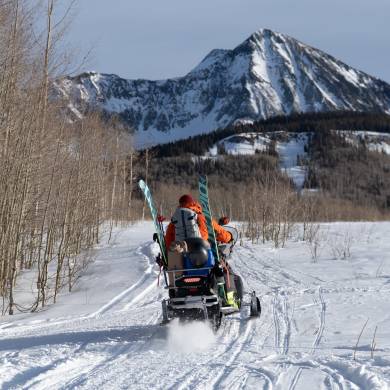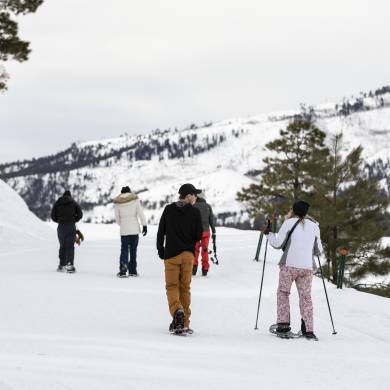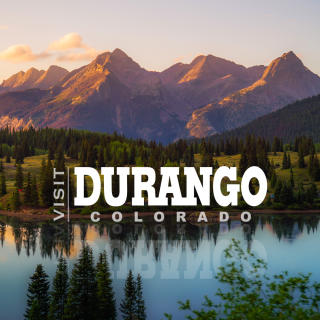San Juan Skyway Facts
Details
Explore the Scenic San Juan Skyway
Drive Length: 232 miles
Drive Time: Approximately 7 hours (this is straight through with no stops; not suggested)
Be Careful: Before heading out on your adventure call Colorado Department of Transportation for road conditions (877)-315-7623
Get out of your car: All the scenic overlooks and historical sites.
Media Contact
Theresa Blake
theresa@treehousepr.com
970-764-7783
Lodging and information: 1-800-525-8855
www.durango.org
A San Juan Skyway Adventure
While in Colorado, don’t miss the scenic San Juan Skyway, a 232-mile, breathtaking loop of paved, state maintained highways through the San Juan Mountains. The San Juan Skyway is designated as an All-American Road, a National Forest Scenic Byway and a Colorado Scenic & Historical Byway. The Skyway has been called one of the most beautiful drives in America, and has been described in an Alamo Car Rental advertisement as a place “where the road touches the sky.”
The San Juans are the largest and most rugged collection of mountain peaks in Colorado with thirteen of the peaks above 14,000 feet. The San Juan Skyway travels over four mountain passes and through two National Forests, Uncompahgre and San Juan, and provides a view of many different climate zones. During the trip, the temperature will vary up to fifteen degrees between valleys and mountaintops with an accompanying change in flora and fauna at different elevations.
The trip can begin at any point along the route; our's will begin in Durango. The town is home to many outdoor activities and the beginning of the Durango & Silverton Narrow Gauge Railroad. The San Juan Skyway begins in Durango on US Highway 550 North heading towards Purgatory Resort. There are spectacular views of Pigeon and Turret Mountains that rise to 13,000 feet, and three fourteeners: Windom, Eolus, and Sunlight. At Purgatory Resort, the road begins its ascent up Coal Bank Pass that tops off at 10,660 feet. Here is where you can get on the Pass Creek Trail to climb up Engineer Mountain, a difficult but rewarding climb. The road continues along mountainsides providing gorgeous views up to Molas Pass’s summit at 10,899 feet. The area has many lakes and hiking trails to be explored at the summit; one can even walk part of the 470+ miles of the Colorado Trail that crosses over Molas Pass on its way to Denver. It is claimed by locals that the air on Molas Pass is some of the cleanest air in the nation. There is also a chance that you might see bighorn sheep, elk, mountain goats, black bears, and/or mule deer.
From Molas Pass you will descend into the active mining town of Silverton, which is also the northern terminus of the Durango & Silverton Narrow Gauge Railroad. The town is a historical site and has the feel of the mining era still intact. Visitors can enjoy a tour of the Old Hundred Gold Mine. This section of the San Juan Skyway from Silverton to Ouray is known as the Million Dollar Highway, where the road climbs up Red Mountain Pass, with a summit of 11,075 feet, and descends into Ouray. Red Mountain, a collapsed volcano cone that got its name from the lava flow and oxidized minerals within the rocky surface, was discovered to have gold in 1860. Miners rushed to the area and proceeded to obtain $850 million worth of gold, silver, and other minerals from its soil. The Million Dollar Highway was engineered and designed by a Russian immigrant named Otto Mears, who became known as the “Pathfinder of the San Juans.” His work through the Uncompahgre Gorge and over Red Mountain is still marveled at by engineers today. The Million Dollar Highway’s name comes from either the cost of construction or from the value of ore bearing fill used in the road; the debate continues on as to where the name came from, but likely will never be resolved. The Million Dollar Highway section of the San Juan Skyway ends in the quaint Victorian town of Ouray.
Ouray is known for its large natural Hot Springs and picturesque views. Take a break from driving and enjoy a dip in the hot springs while enjoying the amazing views that surround the town. Having relaxed for a little bit in the springs, you'll continue your trip, leaving the mountains behind and entering the ranching community of Ridgway. In Ridgway, the San Juan Skyway leaves Hwy 550 and turns onto Colorado State Road 62. This winds through fields, over the Dallas Divide and passes Mount Sneffel. The road changes to Colorado Highway 145 and drops into the deep box canyon where Telluride is located; Telluride is known in the winter for its fabulous steep and deep skiing and in the summer for all the outdoor activities it has to offer. The town is also known as the “Festival Capital of Colorado,” offering festivals for everything from film to beer to music. Be careful of your wallet while strolling main street, Butch Cassidy robbed his first bank here on June 24, 1889.
The San Juan Skyway proceeds out of Telluride on Colorado Highway 145 over Lizard Head Pass, leading to views of two more 14,000-foot peaks, Mount Wilson and Wilson Peak. Also on the pass is Ames Power Plant, which is the world’s first commercial supply of alternating current, which is powered by water from nearby Trout Lake. The Skyway descends into Rico where there are beehive structures that were once used in the early parts of the smelting process. The road follows the Dolores River, and if you are a fisherman, bring your rod and enjoy the river. The route leads into another small ranching and logging community, Dolores, also known as the gateway to McPhee Reservoir. McPhee Reservoir is one of the largest man-made lakes in Colorado. Before building the reservoir, archeologists removed many Ancestral Puebloan sites and ruins to preserve history. The excavated artifacts along with a set of ruins are on display in the Anasazi Heritage Center, just a few miles down the road.
Leaving Dolores, the San Juan Skyway continues to US Highway 160 into Cortez. Cortez is known as the Archaeological Center of the United States and home to one of the country’s newest monuments, Canyons of the Ancients. Also located in Cortez is Crow Canyon Archeological Center. The facility holds programs where one can spend a week excavating ruins with professional archaeologists, as well as day trips. Mesa Verde National Park is 52,000 acres of mesas and canyons that were inhabited by the Ancestral Puebloan people seven hundred years ago. The site contains many cliff dwellings located in alcoves in canyon walls, the most famous being Balcony House, Cliff Palace, Spruce Tree House, and Long House. After being named a United Nations World Heritage Cultural Site in 1978, Mesa Verde has become an important stop for many foreign and domestic visitors to explore.
The final stretch of the San Juan Skyway goes back to Durango from Mesa Verde National Park through Mancos on US Highway 160. In Mancos, there is a mill that processes Aspen trees into matchsticks and many great lakes for boating and fishing. The drive again passes through mountains; this time they are the La Plata Mountains which is a sub-range of the San Juans. This area, between Mancos and Durango, is home to elk, as well as cattle and llama farms.
While in Durango, enjoy the Victorian charm of downtown streets lined with restored historical landmarks, shops, many restaurants and art galleries. For the more active types, there are guided rafting trips down the Animas River, mountain biking on one of the many trails or horseback riding with one of the many outfitters in the area. Enjoy a ride on the Durango & Silverton Narrow Gauge Railroad, a historical steam powered railroad founded in 1881 to serve the booming mining industry. This authentically-restored train now carries more than 200,000 passengers annually along the Animas River through the San Juan Forest to the historic town of Silverton.
The All American Road is the highest designation given by the US Department of transportation and was awarded to the San Juan Skyway because of the rich experience in culture, archaeology, history, scenery, and recreation the road offers to visitors. The San Juan Skyway was one of the first six roads in the United States to receive this designation.



